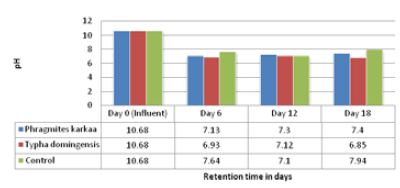CONSTRUCTED WETLAND SYSTEMS VEGETATED WITH DIFFERENT MACROPHYTES IN THE TREATMENT OF INDUSTRIAL WASTE WATER EFFLUENT
Keywords:
Typhadomingensis, phragmiteskarka, wetlands, soft drink and macrophytesAbstract
Wastewater effluents generated from the soft drink industry contain pollutants which are higher than what is acceptable for the discharge in the water bodies in Nigeria. This result in environmental unbalance which causes adverse health issues. In this study, the performance of two macrophytes (Phragmites karkaa and Typha domingensis) in a sub-surface vertical flow constructed wetland was investigated. One hundred litres of wastewater effluent obtained from an Industry (Seven Up Bottling company in Ibadan, Nigeria) was applied
to the systems and the properties of the waste water effluent as well as the performance of the treatment tanks
with respect to parameters such as; pH; TDS; TSS; DO; BOD5; turbidity; nitrate and phosphate were evaluated.
The treatment performance of the systems was evaluated for a retention period of 6, 12 and 18 days. It was
observed that parameters such as pH, BOD5; and TSS did not conform to the acceptable limits; they had values
greater than those prescribed in the standards for discharge. The value for BOD5 was 652 mg/l and after six
days retention in the vegetated tanks had reduced by at least 98%. The unvegetated control setup only reduced
the BOD5 by 40.18% after the first six days of treatment. The performance of the Phragmites karka and the
Typha domingensis in the removal of organic substances and solid pollutants were similar with both plants
effectively removing the pollutants. However, Typha domingensis performed better than Phragmites karaka
in removing organic pollutants and Phragmites karka gives clearer water than Typha domingensis in terms of
turbidity.
Downloads





